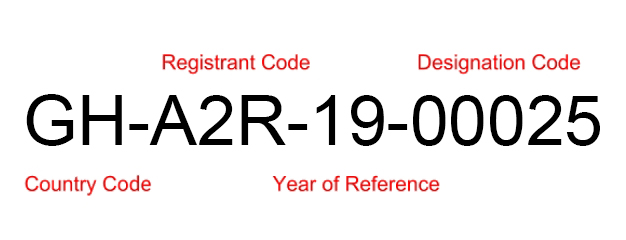Everything You Need to Know About ISRCs
ISRC – International Standard Recording Code
What is it?
An ISRC is a unique 12-digit code that is assigned to a specific sound recording (i.e CD, audio file, video, etc…). In short, the ISRC code is essentially a “digital fingerprint” for a sound recording – it represents a recording’s unique identity and helps separate it from the hundreds and thousands of other sound recordings worldwide.
This number is used to track and verify specific information about a recording, including but not limited to:
- Track recording sales, streams, and radio station plays
- Artist(s) name
- Label name
- UPC (Universal Product Code)
- Identifying the authors of composition being recorded
Remember that each recording can only have one ISRC code attached it, and this code should never be reused for another recording. So for example, if an artist plans on releasing a 15-song album for public consumption, that artist would assign 15 unique ISRC codes (one per each track being released) which would be linked to each specific recording forever. This also includes instrumentals, remixes, covers, etc. – these edited recordings require unique ISRC codes separate from the original.
Who Needs an ISRC
A simple way to figure out if you need an ISRC code is to ask yourself this question: Is my recording being released for public consumption? If the answer is yes, then an ISRC code will be an extremely helpful resource when it comes to maximizing your potential earnings. Once a code has been embedded into your track, it uniquely identifies that track/composition as belonging to you, and allows people/services to know exactly who needs to be paid for the use of that recording.
How are ISRCs Created?
An ISRC code consists of 4 different parts that are made up as follows-
- Country Code (2 ASCII characters) – The very first two characters in any ISRC code represent the country where the registrant’s home-base is. These characters stay the same regardless of where the sound recording is being distributed.
- Registrant Code (3 ASCII characters or digits) – previously known as “First Owner Code”, these 3 characters represent the person who registered the sound recording. These 3 characters remain the same across all recordings you register.
- Year of Reference (2 digits or ASCII characters) – This set of characters represent the year in which the ISRC was assigned to the sound recording.
- Designation Code / Serial Number (5 digits) – The final 5 digits of an ISRC code is simply a number the owner of the recording designates to the track. For example, 00001 would represent the 1st track you released during X year, 0002 represents the 2nd track you released in the same year, and so on.
Here is an example of a code someone would issue from the GHANA for their first track released in 2019:

How Can I Find One?
On your Apprise Music account (Backstage), you can grab your ISRCs. If your songs have not been released on Spotify, you can obtain your ISRC’s by contacting your distributor, such as services like Apprise Music, DistroKid or CD Baby.
Interested in learning more? Check out our blog post explaining the differences between an ISRC and an ISWC.
Thanks for reading.
Want to keep up with Apprise Music for frequent music and publishing updates?
Follow us @apprisemusic
Subscribe to our Newsletter
Visit the Apprise Music Blog
